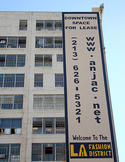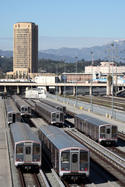Changsha, Hunan (China): Over the past 30 years, China has eradicated more poverty than any nation in the world’s history. The reforms instituted by Deng Xiaopeng have not only created a large, new middle class in China, but have also produced some of the largest and architecturally most impressive urban areas in the world. There is still poverty in China, but the most extreme poverty is in the rural areas. The expansive shanty-town poverty found in Manila, Jakarta, Mexico City, Sao Paulo or Mumbai is absent in the large Chinese urban areas. read more »
Urban Issues
World Capitals Of The Future
For most of those which were great once are small today; And those that used to be small were great in my own time. Knowing, therefore, that human prosperity never abides long in the same place, I shall pay attention to both alike
–Herodotus, Fifth Century B.C.
If the great Greek chronicler and "father of history" Herodotus were alive today, he would have whiplash. In less than a lifetime, we have seen the rapid rise of a host of dynamic new global cities – and the relative decline of many others. With a majority of the world's population now living in cities, what these places do with their new wealth ultimately will shape this first truly urban century. read more »
Beijing is China's Opportunity City
“What the Western fantasy of a China undergoing identity erasure reveals is a deep identity crisis within the Western world when confronted by this huge, closed, red alien rising. There is a sense that world order is sliding away from what has been, since the outset of industrialization, an essentially Anglo-Saxon hegemony, and a terrible anxiety gathers as it goes.” – Adrian Hornsby, “The Chinese Dream: A Society Under Construction”. read more »
Three Roads and a Railroad
For most visitors, Las Vegas is a one-dimensional town. One either walks up the Strip, or down (though for compass-challenged tourists, even that can be confusing). An adventurous minority will go downtown to Fremont Street, a few short blocks of casinos and souvenir shops that I liked better before they roofed it.
It turns out that naïve tourists have stumbled onto the truth: there are no east-west highways in Las Vegas. And therein lies the tale. read more »
Warning on Road to Recovery: Beware of dumbdowntown.com
Big cities will eventually get through the recession.
How much help they’ll get from the design-obsessed bloggers who are so anxious to shape urban life is open to question.
Consider the blogosphere in Los Angeles, which bubbled with reports of decapitated chickens turning up all around town earlier this year.
Some bloggers speculated that chickens were being killed in rituals of the Santeria cult, which has roots in Latin America. The speculation seemed on the way to becoming an urban legend. read more »
- Login to post comments
New Feudalism: Does Home Ownership Have a Future?
In mid August, as we were beginning to feel a pulse in the nation’s housing market, an academician and housing expert from the University of Pennsylvania named Thomas J. Sugrue wrote an article in the Wall Street Journal proposing that, for many people, the new American Dream should be renting. read more »
Rome Vs. Gotham
Urban politicians have widely embraced the current concentration of power in Washington, but they may soon regret the trend they now so actively champion. The great protean tradition of American urbanism – with scores of competing economic centers – is giving way to a new Romanism, in which all power and decisions devolve down to the imperial core.
This is big stuff, perhaps even more important than the health care debate. The consequence could be a loss of local control, weakening the ability of cities to respond to new challenges in the coming decades. read more »
Live by the Specialty, Die by the Specialty
By Richard Reep
Regions have a bad habit of getting into ruts. This is true of any place that focuses exclusively on one industry – with the possible exception of the federal government, which keeps expanding no matter what. This reality is most evident in places like Detroit, but it also applies to one like Orlando, whose tourist-based economy has been held up as a post-industrial model. read more »
- Login to post comments
Playing with the Big Boys: The Costs of Fruitless Passenger Rail Tours
In these hard times the New Zealand public is somewhat excited about the travel costs incurred by our Government Ministers and MPs. Overseas travel attracts particular rage and fury.
A particularly galling example is a proposal by Christchurch City Mayor Bob Parker, his CEO Tony Marryat, and an urban planner, to visit the US to investigate the performance of light rail in Los Angeles, San Francisco Bay Area, Seattle and Vancouver. read more »
Online Neighborhood: The Front Porch Forum
Last summer, Sharon Owens had a problem. The Burlington, VT mother of three was trying to satisfy the wishes of her soon-to-be 14-year old daughter who wanted to celebrate her birthday with a canoe outing with friends. The problem was that renting the necessary canoes would have cost hundreds of dollars. Interestingly, it seemed that nearly ever other house in Sharon’s neighborhood had a canoe in the backyard, or parked under a tarp next to a garage. But Sharon, like many of us, did not know her neighbors, and felt uncomfortable asking them. read more »





















